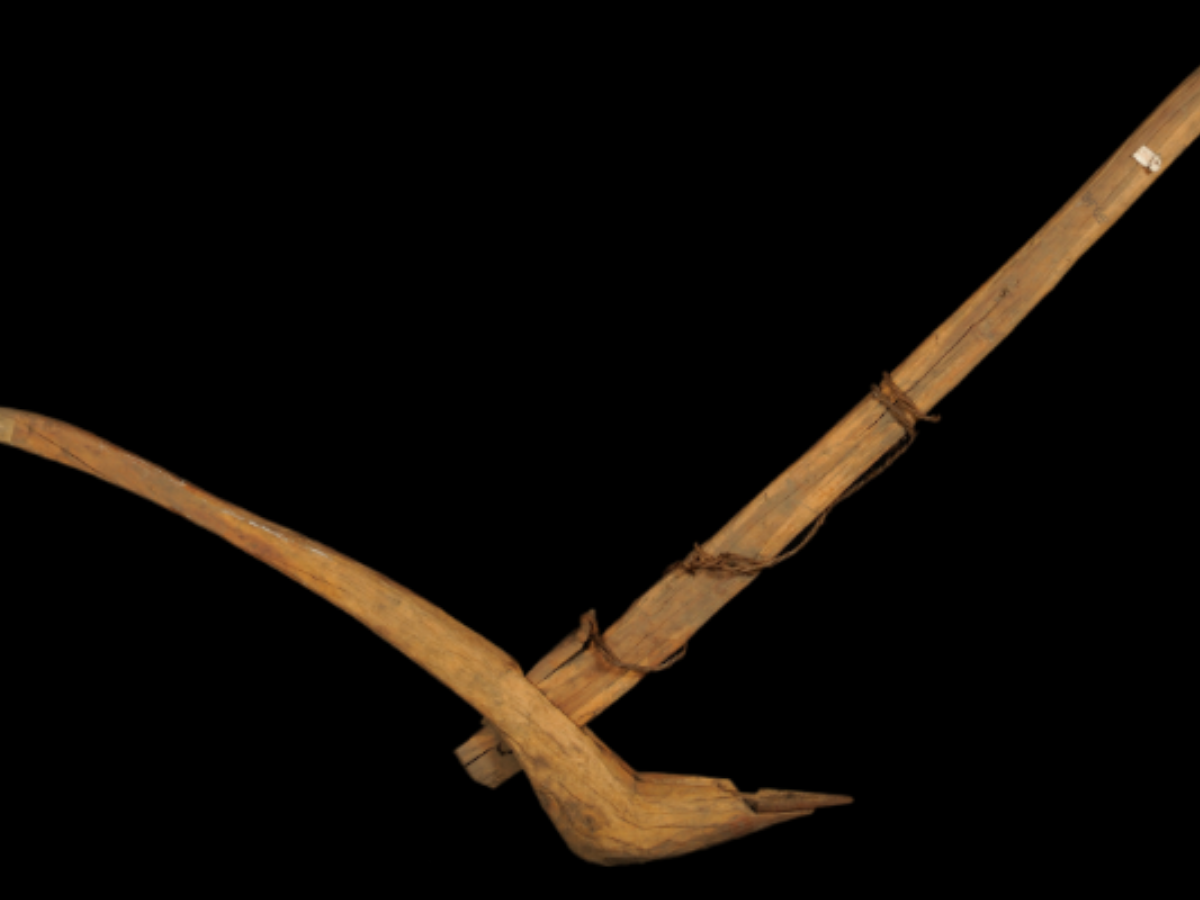State
Tribe Name
Art Type
short description
Habituated in Odisha the Gadaba tribe heralds an assortment of agricultural practices and sustainable agricultural traditions. The major of which is the use of the traditional wooden plough, which, for generations, has served as an important farm tool in land preparation.
Thumbnail

Filter Postion
Left
Filter Background
Off
Theme
Filter Header Image

content
Image

description
Habituated in Odisha the Gadaba tribe heralds an assortment of agricultural practices and sustainable agricultural traditions. The major of which is the use of the traditional wooden plough, which, for generations, has served as an important farm tool in land preparation.
There are mainly three parts in a wooden plough: beam, an angled body, and a triangular-shaped iron share. The outer surface of the plough's body is roundish in shape, which allows for a smooth passage through the soil. The handle is almost straight with a narrow gripping portion to enable easy control of the ploughging process. A grass rope is coiled around the beam, one end secured firmly to the beam while the other is tied to a short wooden stick. The system enables the stabilization of the plough while in use.
This plough is used by the Gadaba for tilling the soil and for making it fit for seed propagation, as well as for controlling its fertility. It speaks of a deepconnect of the people with nature and their eco-sustainable character. Making and using such tools have passed from generation to generation thus providing the pattern for the conservation of indigenous knowledge.
Recognition and support of indigenous implements, such as the traditional Gadaba plough becomes essential in sustaining current rural livelihoods while also highlighting the cultural heritage of such communities .
There are mainly three parts in a wooden plough: beam, an angled body, and a triangular-shaped iron share. The outer surface of the plough's body is roundish in shape, which allows for a smooth passage through the soil. The handle is almost straight with a narrow gripping portion to enable easy control of the ploughging process. A grass rope is coiled around the beam, one end secured firmly to the beam while the other is tied to a short wooden stick. The system enables the stabilization of the plough while in use.
This plough is used by the Gadaba for tilling the soil and for making it fit for seed propagation, as well as for controlling its fertility. It speaks of a deepconnect of the people with nature and their eco-sustainable character. Making and using such tools have passed from generation to generation thus providing the pattern for the conservation of indigenous knowledge.
Recognition and support of indigenous implements, such as the traditional Gadaba plough becomes essential in sustaining current rural livelihoods while also highlighting the cultural heritage of such communities .
Image Mode
landscape
promoted
On
Verified
Off
